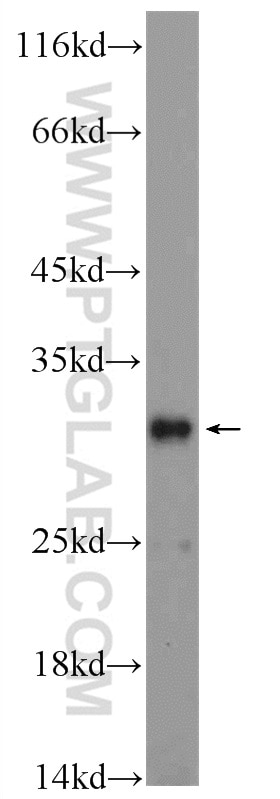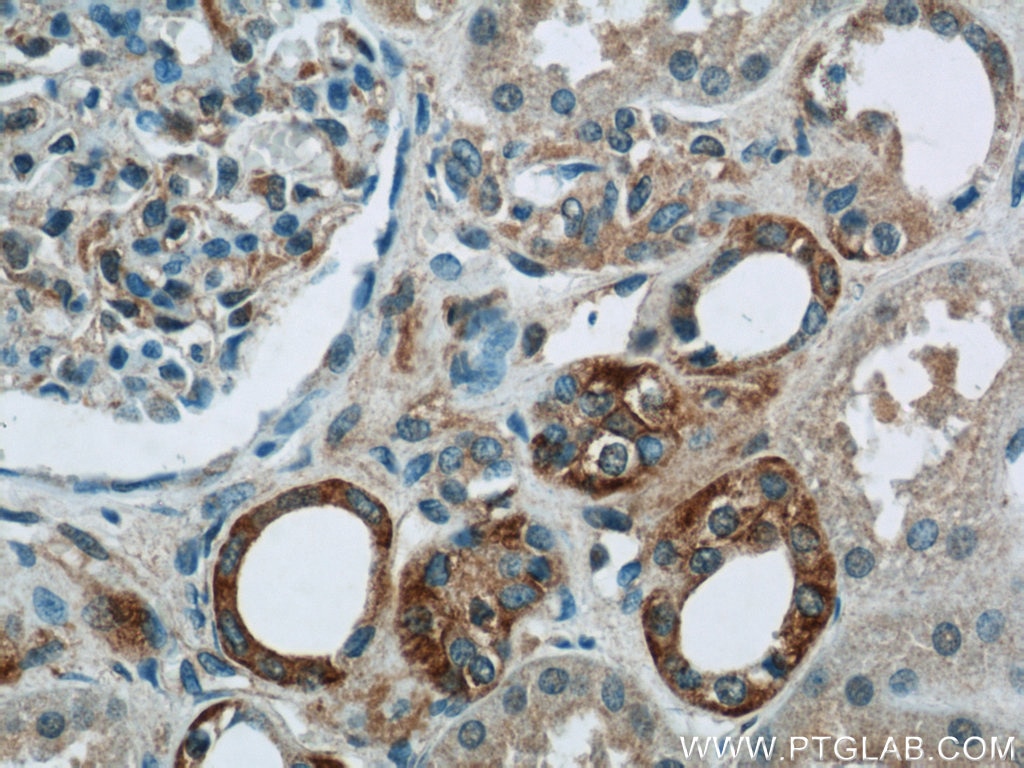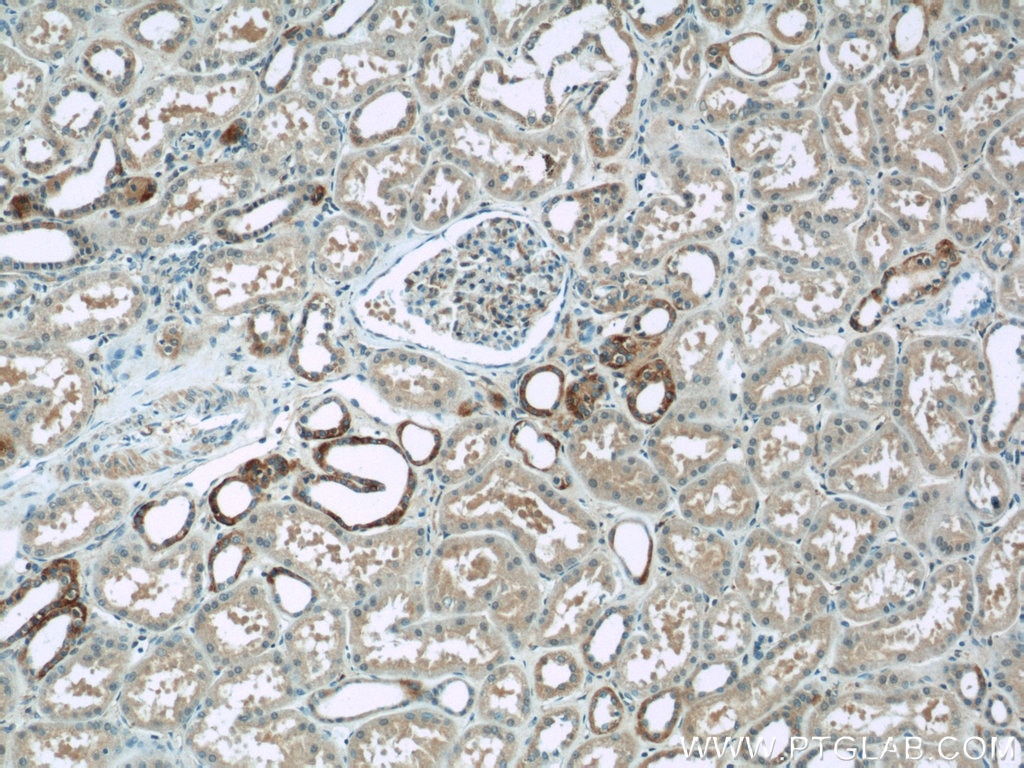Anticorps Polyclonal de lapin anti-PIPPIN
PIPPIN Polyclonal Antibody for WB, IHC, ELISA
Hôte / Isotype
Lapin / IgG
Réactivité testée
Humain, souris
Applications
WB, IHC, ELISA
Conjugaison
Non conjugué
N° de cat : 25013-1-AP
Synonymes
Galerie de données de validation
Applications testées
| Résultats positifs en WB | tissu cérébral de souris |
| Résultats positifs en IHC | tissu rénal humain il est suggéré de démasquer l'antigène avec un tampon de TE buffer pH 9.0; (*) À défaut, 'le démasquage de l'antigène peut être 'effectué avec un tampon citrate pH 6,0. |
Dilution recommandée
| Application | Dilution |
|---|---|
| Western Blot (WB) | WB : 1:500-1:1000 |
| Immunohistochimie (IHC) | IHC : 1:20-1:200 |
| It is recommended that this reagent should be titrated in each testing system to obtain optimal results. | |
| Sample-dependent, check data in validation data gallery | |
Informations sur le produit
25013-1-AP cible PIPPIN dans les applications de WB, IHC, ELISA et montre une réactivité avec des échantillons Humain, souris
| Réactivité | Humain, souris |
| Hôte / Isotype | Lapin / IgG |
| Clonalité | Polyclonal |
| Type | Anticorps |
| Immunogène | PIPPIN Protéine recombinante Ag16216 |
| Nom complet | cold shock domain containing C2, RNA binding |
| Masse moléculaire calculée | 153 aa, 17 kDa |
| Poids moléculaire observé | 30 kDa |
| Numéro d’acquisition GenBank | BC067113 |
| Symbole du gène | CSDC2 |
| Identification du gène (NCBI) | 27254 |
| Conjugaison | Non conjugué |
| Forme | Liquide |
| Méthode de purification | Purification par affinité contre l'antigène |
| Tampon de stockage | PBS with 0.02% sodium azide and 50% glycerol |
| Conditions de stockage | Stocker à -20°C. Stable pendant un an après l'expédition. L'aliquotage n'est pas nécessaire pour le stockage à -20oC Les 20ul contiennent 0,1% de BSA. |
Informations générales
PIPPIN, also known as CSDC2 (Cold shock domain-containing protein C2) is an RNA‐binding protein (RBP), highly enriched in the rat brain, specifically enriched in some pyramidal neurons of the cerebral cortex and in the Purkinje cells of the cerebellum (PMID: 10446180). PIPPIN has the potential to undergo different posttranslational modifications and might be a good candidate to regulate the synthesis of specific proteins in response to extracellular stimuli. Nuclear CSDC2 is connected to proliferation and cytoplasmic CSDC2 to terminal differentiation in the decidua and that CSDC2 could regulate differentiation during decidua development (PMID: 30078185, PMID: 17053029).
Protocole
| Product Specific Protocols | |
|---|---|
| WB protocol for PIPPIN antibody 25013-1-AP | Download protocol |
| IHC protocol for PIPPIN antibody 25013-1-AP | Download protocol |
| Standard Protocols | |
|---|---|
| Click here to view our Standard Protocols |




